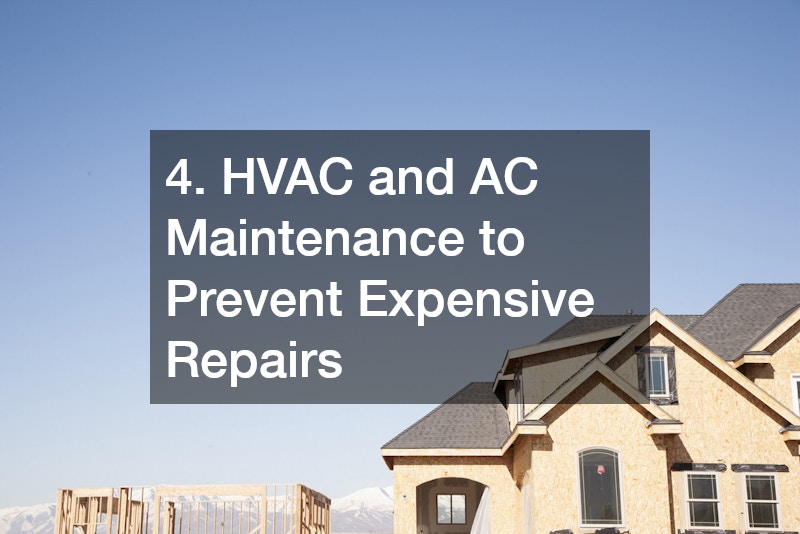Owning a home is an exciting journey, but it comes with responsibilities that many homeowners underestimate. While the idea of a beautiful home filled with memories is appealing, it is the maintenance and proactive care that ensures your home remains safe, healthy, and valuable. Small problems, when ignored, can quickly escalate into costly repairs, health hazards, and structural issues that are far more complex to fix.
Three of the most common and potentially damaging problems homeowners face are mold growth, roof damage, and septic system issues. Each of these can affect multiple aspects of your home—from your health and comfort to your financial stability. By understanding how to prevent, identify, and address these issues early, you can protect your investment and enjoy peace of mind knowing your home is in good hands.
In this guide, we will dive into practical strategies, actionable maintenance tips, and professional advice to help you keep your home in top condition. We will cover everything from inspections and preventive measures to the importance of hiring the right professionals, emergency preparedness, and long-term improvements that safeguard your property for years to come.
1. Regular Roof Inspections: Catching Damage Early

Your roof is more than just a cover over your head—it is the primary barrier between your home and the elements. Weather, wind, rain, snow, and temperature fluctuations all take a toll on roofing materials over time. Even a minor leak or missing shingle can lead to significant structural damage if left unaddressed.
Why Roof Inspections Matter
A well-maintained roof prevents:
-
Water damage: Leaks can seep into ceilings and walls, damaging drywall, insulation, and even electrical wiring.
-
Energy loss: Gaps or damaged shingles can compromise insulation, forcing HVAC systems to work harder.
-
Structural issues: Prolonged water exposure can weaken roof decking, leading to costly repairs.
How to Inspect Your Roof
Homeowners can perform basic inspections safely from the ground or attic. Key points to check include:
-
Shingles or tiles: Look for curling, cracking, or missing pieces.
-
Gutters and downspouts: Check for debris, rust, or sagging that might cause water overflow.
-
Flashing and seals: Examine around chimneys, vents, and skylights for gaps or rust.
-
Interior signs: Water stains, sagging ceilings, or musty odors indicate potential leaks.
While DIY inspections are useful, professional roofing contractors provide a more thorough evaluation using specialized equipment and experience. They can spot issues invisible to the untrained eye, such as underlayment damage, hidden leaks, or structural weaknesses.
Roof Repair Strategies
When issues are identified, immediate action is critical. Roof repair services can handle:
-
Replacing damaged or missing shingles.
-
Fixing leaks and reinforcing flashing.
-
Addressing water damage in the roof structure before it spreads.
Actionable Tips:
-
Schedule inspections at least once a year, ideally in late spring or early fall.
-
Document all findings with photos for comparison over time.
-
Address minor problems promptly to avoid extensive repairs or full roof replacement.
-
Keep a maintenance log with dates of inspections, repairs, and contractor visits.
Scenario: A homeowner noticed a small water stain in their attic and delayed inspection. Within six months, the leak had damaged the attic framing and insulation, costing thousands more than the original repair. Regular inspections could have prevented this escalation.
2. Effective Mold Prevention and Remediation
Mold is a silent but dangerous problem that affects both the health of your family and the structural integrity of your home. It thrives in damp, humid environments and can grow behind walls, under flooring, and in hidden corners where moisture accumulates.
Understanding the Risks
-
Health hazards: Mold exposure can trigger allergies, respiratory problems, headaches, and fatigue. Certain molds produce mycotoxins, which can be particularly dangerous.
-
Structural damage: Mold feeds on organic materials like wood and drywall, weakening the home’s structure over time.
-
Hidden costs: Untreated mold can lead to insurance claims, renovations, and temporary relocation.
Prevention Strategies
Controlling moisture is the most effective way to prevent mold growth:
-
Control humidity: Keep indoor humidity below 60% using dehumidifiers. Basements and bathrooms are high-risk areas.
-
Fix leaks promptly: Roof leaks, plumbing issues, and basement seepage should be addressed immediately.
-
Improve ventilation: Ensure bathrooms, kitchens, and laundry rooms have proper exhaust fans or ventilation systems.
-
Inspect appliances: Check washing machines, dishwashers, and water heaters for leaks.
Identifying Mold
-
Musty odors in hidden areas.
-
Discoloration or staining on walls, ceilings, or floors.
-
Visible growth around windows, plumbing fixtures, or air vents.
-
Recurrent condensation on windows or walls.
Professional Mold Removal
For serious infestations, DIY solutions are often insufficient. Mold removals services provide:
-
Safe containment and removal of mold.
-
Cleaning and sanitization to prevent recurrence.
-
Guidance on moisture control and building repairs.
Additionally, if your home was built before 1978, a lead inspection service may be necessary during remediation, as older homes may have lead paint that could be disturbed.
Actionable Tips:
-
Inspect basements, crawlspaces, attics, and behind appliances regularly.
-
Use mold-resistant paints in bathrooms, kitchens, and laundry areas.
-
Remove and replace water-damaged drywall or flooring when mold is present.
-
Invest in moisture meters to detect hidden damp areas.
-
Ensure your home has proper insulation to prevent condensation on walls.
Scenario: After a heavy rainstorm, a homeowner noticed damp spots behind the kitchen cabinets. Ignoring them for months led to extensive mold growth in the drywall and subfloor, requiring professional removal and a major renovation.
3. Maintaining Your Septic System for Longevity
For homes not connected to municipal sewage, septic systems are crucial. Neglecting your septic system can result in backups, foul odors, and contamination of nearby soil and water.
Common Septic Issues
-
Clogs: Caused by flushing inappropriate materials like wipes, grease, or chemicals.
-
Overflowing tanks: Can result from improper maintenance or excessive water use.
-
Tree root intrusion: Roots can damage pipes and tanks.
-
Structural failures: Corrosion or cracks in the tank can contaminate surrounding soil.
Preventive Measures
Maintaining your septic system helps avoid these costly problems:
-
Regular pumping: Most systems require pumping every 3–5 years.
-
Mindful water usage: Avoid overloading the system with excessive water.
-
Inspection: Schedule professional inspections to catch small problems before they become major.
-
Proper landscaping: Avoid planting trees or large shrubs near the septic tank or drain field.
Professional Assistance
Septic repair professionals handle:
-
Pumping and cleaning tanks.
-
Pipe repairs or replacements.
-
Diagnosing and fixing blockages or leaks.
For larger-scale maintenance or upgrades, general contractors may be involved to oversee excavation, system replacements, or structural work.
Actionable Tips:
-
Maintain a log of pumping schedules and inspections.
-
Avoid planting deep-rooted plants near the drain field.
-
Don’t drive or park vehicles over the septic system.
-
Educate household members about what should and shouldn’t go down the drains.
-
Install risers or markers to make tank locations clear for future maintenance.
Scenario: A family ignored a slow-draining toilet, thinking it was minor. Eventually, the septic system backed up, causing wastewater to flood the yard and basement—a major health and financial issue that could have been prevented with proper maintenance.
4. HVAC and AC Maintenance to Prevent Expensive Repairs

A properly functioning HVAC system is essential for comfort and safety. Neglecting your heating and cooling system can lead to inefficiency, higher energy bills, and even contribute to mold growth from excess moisture.
Routine Maintenance
-
Change filters regularly: This improves air quality and system efficiency.
-
Keep vents clear: Blocked vents reduce airflow and strain the system.
-
Clean condensate drains: Prevent water buildup that can lead to mold.
-
Inspect ductwork: Look for leaks or disconnected sections that reduce efficiency.
Professional Inspections
Scheduled inspections by AC companies or HVAC repair specialists can:
-
Check refrigerant levels and electrical connections.
-
Clean coils and mechanical components.
-
Detect early signs of leaks, corrosion, or wear.
-
Adjust system settings for optimal energy efficiency.
Actionable Tips:
-
Schedule inspections before peak seasons—spring for cooling, fall for heating.
-
Monitor energy bills for sudden spikes that may indicate inefficiency.
-
Install a programmable thermostat to reduce unnecessary wear.
-
Keep outdoor units free from debris, plants, and leaves.
-
Consider a system tune-up every six months for older units.
Scenario: Ignoring a noisy AC unit led to a compressor failure during a heatwave, leaving the home uncomfortably hot and requiring thousands in repairs that could have been avoided with a spring inspection.
5. Protecting Your Home Exterior: Fencing, Paving, and Drainage
The exterior of your home plays a critical role in preventing water intrusion, pest infestations, and structural damage. Proper maintenance of fences, driveways, patios, and grading ensures that rainwater and snow melt are directed away from your foundation.
Exterior Maintenance Tasks
-
Inspect fences for rot, rust, loose boards, or sagging sections.
-
Repair cracks, potholes, or uneven surfaces in driveways and walkways.
-
Ensure proper grading around the foundation to prevent water pooling.
-
Seal cracks and gaps in exterior walls, windows, and doors.
Professional Support
Fence companies can repair or install durable fencing to protect your yard and property. Paving contractors can restore driveways, patios, and walkways to prevent water pooling and foundation issues.
Actionable Tips:
-
Regularly clean gutters and downspouts to prevent water damage.
-
Seal driveways and patios to extend their lifespan.
-
Trim vegetation near fences to avoid moisture buildup and damage.
-
Install proper drainage solutions, such as French drains, for low-lying areas.
-
Conduct seasonal inspections to catch minor issues before winter or rainy seasons.
Scenario: A homeowner ignored cracks in their driveway for years. When heavy rains arrived, water pooled against the foundation, leading to basement seepage and mold growth. Paving repairs and proper grading could have prevented this.
6. Seasonal Maintenance Checklists
Seasonal maintenance ensures that your home is prepared for weather changes, minimizing unexpected repair costs. Following a checklist keeps homeowners organized and proactive.
Spring Checklist
-
Roof inspection for winter damage.
-
Clean gutters and downspouts.
-
HVAC system inspection before summer.
-
Check for signs of mold in basements or crawlspaces.
Summer Checklist
-
Service AC systems for peak efficiency.
-
Inspect exterior for cracks or damage from sun exposure.
-
Check landscaping and grading around the foundation.
-
Monitor for pest infestations that can affect walls and insulation.
Fall Checklist
-
Inspect and repair roofs before winter storms.
-
Drain and winterize outdoor plumbing.
-
Clean out attic and basement to prevent moisture buildup.
-
Inspect chimneys and fireplace systems.
Winter Checklist
-
Monitor indoor humidity to prevent mold growth.
-
Check heating systems and schedule repairs.
-
Inspect fences and exterior surfaces for damage from snow and ice.
-
Protect outdoor AC units from snow and ice buildup.
Actionable Tips:
-
Keep a seasonal maintenance calendar.
-
Document completed tasks for accountability.
-
Address small repairs immediately to avoid escalation.
-
Prepare an emergency kit for winter storms, including backup power sources.
7. Hiring the Right Professionals for Major Home Projects

Not all home maintenance can be handled alone. Choosing the right professionals ensures high-quality repairs and long-lasting results.
Tips for Hiring Contractors
-
Verify licenses, insurance, and certifications.
-
Check references and online reviews.
-
Request detailed quotes and written agreements.
-
Ask about warranties on work completed.
Specialized Professionals
-
Roofing contractors for inspections, repairs, or full replacements.
-
General contractors for extensive renovations or structural projects.
-
AC companies for HVAC installation or complex repairs.
-
Septic repair specialists for major system issues.
Actionable Tips:
-
Always get multiple quotes to compare pricing and services.
-
Maintain a directory of trusted professionals for future needs.
-
Communicate clearly about expectations, timelines, and budget.
-
Confirm that the contractor will obtain necessary permits.
8. Emergency Preparedness for Unexpected Home Issues
Even with proactive maintenance, emergencies can occur. Quick action can minimize damage and costs.
Common Home Emergencies
-
Roof leaks during storms.
-
Septic system backups.
-
Mold outbreaks after water damage.
-
AC or heating system failures during extreme weather.
Immediate Steps
-
Shut off water or electricity if necessary.
-
Contain leaks or standing water with towels or buckets.
-
Document damage for insurance claims.
-
Use temporary patching to prevent further damage.
Professional Assistance
-
Roof repair services can quickly address leaks or structural damage.
-
Septic repair specialists can handle backups and prevent environmental hazards.
-
Mold removals services can contain and clean infestations promptly.
Actionable Tips:
-
Keep emergency contact numbers for contractors handy.
-
Maintain a basic toolkit for temporary fixes.
-
Create an inventory of home valuables for insurance purposes.
-
Have backup heating or cooling solutions if your HVAC fails.
9. Long-Term Investments That Prevent Common Home Problems
Proactive improvements can save money in the long run and protect your home from recurring issues.
Examples of Investments
-
Upgraded roofing materials with higher durability.
-
Mold-resistant insulation and paints.
-
Energy-efficient HVAC systems.
-
Advanced septic monitoring systems.
-
Properly graded landscapes with drainage solutions.
Professional Support
-
HVAC repair experts can guide you on energy-efficient systems.
-
Mold removals specialists can advise on preventative treatments during renovations.
-
General contractors can coordinate multi-system upgrades.
Actionable Tips:
-
Plan major upgrades around seasonal maintenance schedules.
-
Evaluate cost versus longevity before making decisions.
-
Consider eco-friendly options that also protect your home.
-
Schedule inspections to ensure that installed upgrades are performing as expected.
10. Final Checklist for Home Protection

To summarize, homeowners can protect their property by:
-
Conducting regular roof inspections.
-
Maintaining HVAC and AC systems.
-
Preventing and remediating mold.
-
Caring for septic systems and plumbing.
-
Monitoring and maintaining exterior surfaces, including fencing and paving.
-
Hiring trusted professionals for complex repairs.
-
Preparing for emergencies proactively.
-
Investing in long-term solutions for prevention.
By following these steps, you can prevent costly repairs, maintain a safe environment, and preserve the value of your home. Proactive care and informed decision-making are the keys to successful homeownership.



